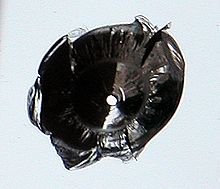
An impact crater is a circular depression in the surface of a solid astronomical object formed by the hypervelocity impact of a smaller object. In contrast to volcanic craters, which result from explosion or internal collapse, impact craters typically have raised rims and floors that are lower in elevation than the surrounding terrain. Lunar impact craters range from microscopic craters on lunar rocks returned by the Apollo program and small, simple, bowl-shaped depressions in the lunar regolith to large, complex, multi-ringed impact basins. Meteor Crater is a well-known example of a small impact crater on Earth.

Heinrich Rudolf Hertz was a German physicist who first conclusively proved the existence of the electromagnetic waves predicted by James Clerk Maxwell's equations of electromagnetism. The unit of frequency, cycle per second, was named the "hertz" in his honor.

A shaped charge is an explosive charge shaped to form an explosively formed penetrator (EFP) to focus the effect of the explosive's energy. Different types of shaped charges are used for various purposes such as cutting and forming metal, initiating nuclear weapons, penetrating armor, or perforating wells in the oil and gas industry.
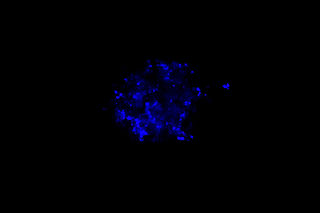
Triboluminescence is a phenomenon in which light is generated when a material is mechanically pulled apart, ripped, scratched, crushed, or rubbed. The phenomenon is not fully understood, but appears to be caused by the separation and reunification of static electrical charges. The term comes from the Greek τρίβειν and the Latin lumen (light). Triboluminescence can be observed when breaking sugar crystals and peeling adhesive tapes.

Chert is a hard, fine-grained sedimentary rock composed of microcrystalline or cryptocrystalline quartz, the mineral form of silicon dioxide (SiO2). Chert is characteristically of biological origin, but may also occur inorganically as a chemical precipitate or a diagenetic replacement, as in petrified wood.
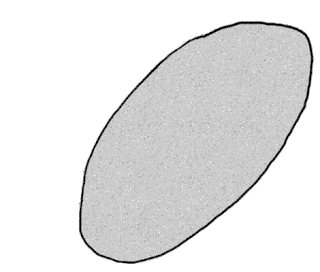
In archaeology, in particular of the Stone Age, lithic reduction is the process of fashioning stones or rocks from their natural state into tools or weapons by removing some parts. It has been intensely studied and many archaeological industries are identified almost entirely by the lithic analysis of the precise style of their tools and the chaîne opératoire of the reduction techniques they used.
In lithic analysis, an eraillure is a flake removed from a lithic flake's bulb of force, which is a lump left on the ventral surface of a flake after it is detached from a core of tool stone during the process of lithic reduction. The mechanics of eraillure formation are related to the propagation of a Hertzian cone of force through the cryptocrystalline matrix of the stone, but the particulars are poorly understood. Eraillures usually form only when a hammerstone is used for lithic reduction, and then only occasionally; use of 'soft' hammer fabricators made from bone, antler, and wood produce different flake characteristics but may also produce an eraillure in rare cases.

In archaeology, a lithic flake is a "portion of rock removed from an objective piece by percussion or pressure," and may also be referred to as simply a flake, or collectively as debitage. The objective piece, or the rock being reduced by the removal of flakes, is known as a core. Once the proper tool stone has been selected, a percussor or pressure flaker is used to direct a sharp blow, or apply sufficient force, respectively, to the surface of the stone, often on the edge of the piece. The energy of this blow propagates through the material, often producing a Hertzian cone of force which causes the rock to fracture in a controllable fashion. Since cores are often struck on an edge with a suitable angle (<90°) for flake propagation, the result is that only a portion of the Hertzian cone is created. The process continues as the flintknapper detaches the desired number of flakes from the core, which is marked with the negative scars of these removals. The surface area of the core which received the blows necessary for detaching the flakes is referred to as the striking platform.
In lithic analysis, a subdivision of archaeology, a bulb of applied force is a defining characteristic of a lithic flake. Bulb of applied force was first correctly described by Sir John Evans, the cofounder of prehistoric archeology. However, bulb of percussion was coined scientifically by W.J. Sollas. When a flake is detached from its parent core, a portion of the Hertzian cone of force caused by the detachment blow is detached with it, leaving a distinctive bulb on the flake and a corresponding flake scar on the core. In the case of a unidirectional core, the bulb of applied force is produced by an initiated crack formed at the point of contact, which begins producing the Hertzian cone. The outward pressure increases causing the crack to curve away from the core and the bulb formation. The bulb of applied force forms below the striking platform as a slight bulge. If the flake is completely crushed the bulb will not be visible. Bulbs of applied force may be distinctive, moderate, or diffuse, depending upon the force of the blow used to detach the flake, and upon the type of material used as a fabricator. The bulb of applied force can indicate the mass or density of the tool used in the application of the force. The bulb may also be an indication of the angle of the force. This information is helpful to archaeologists in understanding and recreating the process of flintknapping. Generally, the harder the material used as a fabricator, the more distinctive the bulb of applied force. Soft hammer percussion has a low diffuse bulb while hard hammer percussion usually leaves a more distinct and noticeable bulb of applied force. Pressure flake also allowed for diffuse bulbs. The bulb of percussion of a flake or blade is convex and the core has a corresponding concave bulb. The concave bulb on the core is known as the negative bulb of percussion. Bulbs of applied force are not usually present if the flake has been struck off naturally. This allows archaeologists to identify and distinguish natural breakage from human artistry. The three main bulb types are flat or nondescript, normal, and pronounced. A flat or nondescript bulb is poorly defined and does not rise up on the ventral surface. A normal bulb on the ventral side has average height and well-defined. A pronounced bulb rises up on ventral side and is very large.
A crusher is a machine designed to reduce large rocks into smaller rocks, gravel, sand or rock dust.
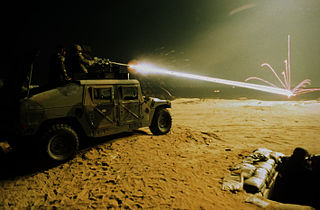
A ricochet is a rebound, bounce, or skip off a surface, particularly in the case of a projectile. Most ricochets are caused by accident and while the force of the deflection decelerates the projectile, it can still be energetic and almost as dangerous as before the deflection. The possibility of ricochet is one of the reasons for the common firearms safety rule "Never shoot a bullet at a flat, hard surface." Ricochets can occur with any caliber, but short or round ricocheting bullets may not produce the audible whine caused by tumbling irregular shapes. Ricochets are a hazard of shooting because, for as long as they retain sufficient velocity, ricocheting bullets or bullet fragments may cause collateral damage to animals, objects, or even the person who fired the shot.

Impactite is rock created or modified by one or more impacts of a meteorite. Impactites are considered metamorphic rock, because their source materials were modified by the heat and pressure of the impact. On Earth, impactites consist primarily of modified terrestrial material, sometimes with pieces of the original meteorite.
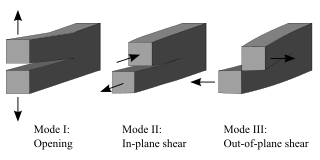
Fracture mechanics is the field of mechanics concerned with the study of the propagation of cracks in materials. It uses methods of analytical solid mechanics to calculate the driving force on a crack and those of experimental solid mechanics to characterize the material's resistance to fracture.

The light-gas gun is an apparatus for physics experiments. It is a highly specialized gun designed to generate extremely high velocities. It is usually used to study high-speed impact phenomena, such as the formation of impact craters by meteorites or the erosion of materials by micrometeoroids. Some basic material research relies on projectile impact to create high pressure; such systems are capable of forcing liquid hydrogen into a metallic state.

In mechanics, an impact is a high force or shock applied over a short time period when two or more bodies collide. Such a force or acceleration usually has a greater effect than a lower force applied over a proportionally longer period. The effect depends critically on the relative velocity of the bodies to one another.

Ceramic engineering is the science and technology of creating objects from inorganic, non-metallic materials. This is done either by the action of heat, or at lower temperatures using precipitation reactions from high-purity chemical solutions. The term includes the purification of raw materials, the study and production of the chemical compounds concerned, their formation into components and the study of their structure, composition and properties.
The impact depth of a projectile is the distance it penetrates into a target before coming to a stop. The physicist Sir Isaac Newton first developed this idea to get rough approximations for the impact depth for projectiles traveling at high velocities.

Fractography is the study of the fracture surfaces of materials. Fractographic methods are routinely used to determine the cause of failure in engineering structures, especially in product failure and the practice of forensic engineering or failure analysis. In material science research, fractography is used to develop and evaluate theoretical models of crack growth behavior.
Ceramic armor is armor used by armored vehicles and in personal armor to resist projectile penetration through high hardness and compressive strength. In its most basic form, it consists of two primary components: A ceramic layer on the outer surface, called the "strike face," backed up by a ductile fiber reinforced plastic composite or metal layer. The role of the ceramic is to (1) fracture the projectile or deform the projectile nose upon impact, (2) erode and slow down the projectile remnant as it penetrates the shattered ceramic layer, and (3) distribute the impact load over a larger area which can be absorbed by ductile polymer or metallic backings. Ceramics are often used where light weight is important, as they weigh less than metal alloys for a given degree of resistance. The most common materials are alumina, boron carbide, and, to a lesser extent, silicon carbide.
Forensic glass analysis is the application and analysis of glass to determine details about a crime. Glass evidence comes in many forms in various types of criminal cases. Glass can be analyzed to understand its origin using comparative analysis which may include measurements relating to physical match, refractive index, density and elemental analysis. It is also possible to analyze glass fractures to better understand the angle, direction and sequence of force as well as the projectile used.
